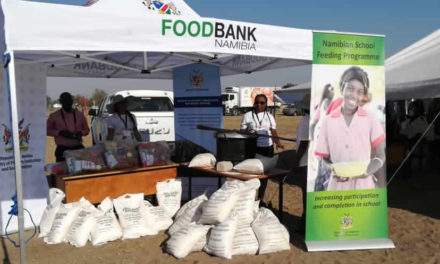
Interest rates – what effect will the Fed Funds Rate have on the Repo Rate?
The short term interest rate curve has been flatter than expected. In simple terms, it tells us that the Monetary Policy Committee of the Bank of Namibia, has raised the local Repo Rate at a slower pace than expected.
Over the past two years the Repo Rate has been adjusted in 0.25 percentage point increments. It now stands at 7%. It has not been adjusted for a while. On 14 February 2017, the Committee has to decide whether it will maintain the so-called accommodative stance, or whether inflationary pressure demands another 0.25% adjustment.
At this point, there is no significant drivers in the local economy to merit a rate increase. 2015’s 5.3% GDP growthe rate will not be achieved. For 2016, GDP growth estimates range from 2.5%, the Bank of Namibia’s official figure, to 1.6%, the IMF latest estimate. This is a fairly wide range but it is only by around the middle of this year, that we will have a semi-reliable prelimary indication of 2016 growth.
For this year, both the Ministry of Finance and the Bank of Namibia expect a slight improvement but neither of the two is prepared to state a rate. In the absense of improved indicators, the only safe assumption now is that fiscal consolidation will continue, albeit not as severely as in 2016. The gist is that this year’s economic growth, may be only marginally better than last year.
This puts the Monetary Policy Committee in a difficult position. To provide some form of growth momentum, a more future-oriented view suggests that the Repo Rate must remain where it is but underlying inflationary pressures dictate a small increase.
However, there is another dimension that will become a reality for emerging markets this year, and that is the US short term rate or the so-called Fed Funds Rate.
At the middle of December last year, now just a month ago, the Federal Reserve raised the rate from 0.5% to 0.75%. This was only the second time in a very long period that the Fed Funds Rate was raised. Remember, for many years it stagnated at 0.25% which effetively, is a negative real rate. So when the Fed increase the rate the first time by 0.25%, technically it was a 100% increase and the world’s markets went into convulsion.
But the December 2016 rise, this time a 50% rise, came and went without any trader, investor or analyst batting an eye. The reason? Tthe market has already priced this move into its valuations, as could be seen from the rising long-term rates. For this year, the Fed has given tentative indications that there may be three more 0.25% increases taking the Fed Funds Rate to 1.5%.
For us, these low interest rates and these minute (and slow) adjustments may seem a bit trifling but if you issue the world’s reserve currency, the smallest adjustment usually has a much exaggerated effect. And that is what we have to deal with.
If economic conditions in the USA would allow the Fed to raise interest rates by a total of 1.5% in 2017, it effectively means short-term interest rates have doubled. It also means that the spread between the Repo Rate and the Fed Funds Rate is narrowing. This has the potential to disrupt liquidity in South Africa, and that will certainl have an effect on us.
Since it is our policy to synchronise the local Repo Rate with the South African Repo Rate, deteriorating liquidity will certainly lead to higher interest rates to attract internationial capital back to the SA market. We will have to follow suit, raising our rate, whether we like it or not.
I think it is safe to assume the Monetary Policy Committee of the South African Reserve Bank would want to keep rates steady or even reduce them to support a very weak economy. I am certain the local Committee would want to do the same.
But ultimately, neither of the two may have any other option than to raise rates. Then it will not be a case of restricting or boosting local liquidity, it will simply be a matter of survival in the face of rising US rates.
From what I see and hear, the Fed is acutely aware of the impact of its actions and has stated at several occassions that it will not make adjustment without prepping the market first. Still, we are small fry and I do not believe the Fed will consider liquidity in Africa much when it tries to normalise monetary conditions in the US.
If South African (and Namibian) bonds are downgraded, it will add to our troubles. Then we will have to raise rates to maintain the spread between US rates and the Repo Rate, and we will have to increase interest rates some more to attract bond investors. And if the Rand weakens substantially above R14 to one US Dollar, it will exacerbate the situation.
So, while we have a reasonable expectation of improved local economic conditions for 2017, liquidity may be the one contraint that we will have to deal with, and that may be very expensive.











































